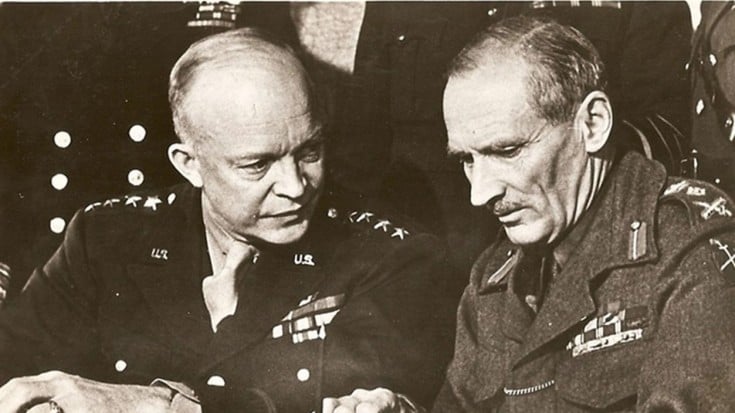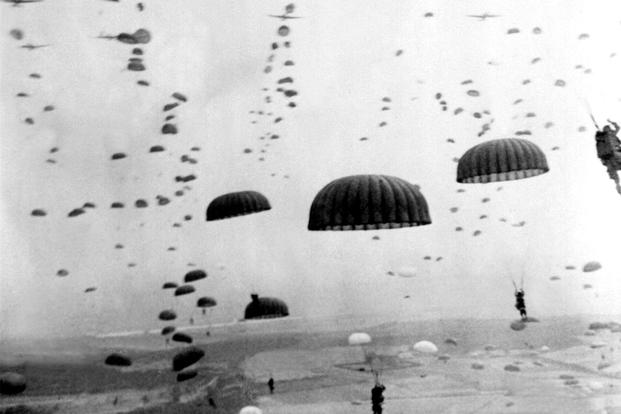
In the third volume of his “liberation trilogy,” THE GUNS AT LAST LIGHT: THE WAR IN WESTERN EUROPE, 1944-1945 Rick Atkinson has written a comprehensive history of the last year of the war in the west highlighted by incisive analysis, personality portraits, and clashes beyond the battlefield pitting remarkable characters against each other as they dominated allied and axis planning implementing wartime strategy. Atkinson begins his narrative with a scene at the St. Paul School in west London on May 15, 1944, where allied strategists gathered to finalize plans for the cross channel invasion of France. In this last volume of his trilogy Atkinson continues opus from Operation Overlord, through the liberation of France, the last Nazi attempt to thwart allied plans at the Battle of the Bulge, to finally entering Berlin and ending the war in Europe. In so doing Atkinson employs the same successful approach used in the first two volumes; THE ARMY AT DAWN: THE WAR IN NORTH AFRICA, 1942-1943 and THE DAY OF BATTLE: THE WAR IN SICILY AND ITALY, 1943-1944, impeccable research and total command of the material pertaining to such a broad topic.
The most important wartime characters be it Winston Churchill, Franklin D. Roosevelt Dwight D. Eisenhower, Edwin Rommel, Charles De Gaulle, Adolf Hitler, Bernard Montgomery, Omar Bradley, George S. Patton and innumerable others are explored from the perspective of their successes and failures, personality flaws and strengths, and their impact on the conduct of the war. In addition, and perhaps most important, Atkinson integrates how the military; from paratroopers, infantry, pilots, those engaged in intelligence, combat engineers, and civilians dealt with their wartime experiences and how it impacted them each day.

Atkinson’s command of detail is evident from the outset in a wonderful prologue as he describes how 1.5 million Americans lived in huts, prefabricated buildings and tents throughout England as they prepared for the Normandy invasion. It would cause the writer George Orwell to quip that “Britain was now occupied territory,” and road signs that read “to all GIs, please drive carefully, that child may be yours.”
Atkinson’s prose separates his narrative from many others who have authored books dealing with the last year of the war in western Europe. He is able to convey his thoughts and descriptions in a clear and concise manner even when dealing with complex military movements and strategy debates. Among his most poignant and important chapters detail the carnage that American GIs experienced on Omaha Beach, answering the questions surrounding how the Germans were caught off guard by the location of the invasion, and the Battle of the Bulge, the greatest American military intelligence failure of the war. In each instance the reader is ensconced in a world occupied by mere mortals who have to make decisions that will affect the lives of millions and redraw the post war world’s political and physical geography.
Atkinson seems able to explain all aspects of the war. Particularly interesting was the “Bocage problem,” terrain that soldiers would have to master once they broke through after the invasion. In one set of aerial photos of an eight-square-mile- swatch over 4000 hedged enclosures were visible. With little preparation or equipment to deal with the foliage it created a major impediment for soldiers to fight through and advance. The carnage of the war receives important treatment especially the fighting that resulted from Hitler’s last ditch offensive into the Ardennes Forest in December 1944. Though SS Panzers and troops were beaten back by the end of January 1945 America suffered battle losses of 105,000, including 19,246 dead. In addition to thousands more who had to cope with trench foot, frostbite, and other diseases. In the end one of ten US combat losses in WWII came from the GIs who had fought in the Ardennes.

(Parachutes open overhead as waves of paratroops land in Holland during operations by the 1st Allied Airborne Army.)
Atkinson’s mastery of facts and figures is to be commended, as is his ability to delve into the egos of the various military figures and the impact of personalities on the conduct of the war. The individual who stands out is British General Bernard Montgomery who commanded allied land forces for the invasion. Montgomery’s ego was such that he believed that he and only he was the smartest tactician and commander of all allied military figures. Atkinson integrates the opinions of those who dealt with him, British as well as American particularly those of Generals Eisenhower, Bradley and Bedell Smith whose characterization (by Eisenhower) of Montgomery as “a psychopath,” “egocentric,” and essentially a dishonest man” sums up how the American leadership felt about him. The British felt in kind concerning Eisenhower and General George C. Marshall as Montgomery and Field Marshall Alan Francis Brooke believed that the SHAEF commander was incompetent, and Marshall knew nothing about strategy. This aspect of the book is most important and makes one wonder how these individuals got along well enough to lead allied forces to victory.

The book itself is a compendium of the most important aspects and events, some major, some not, of the war in the west amazing the reader with the author’s ability to juggle and integrate so many diverse happenings into one volume by weighing every small piece of evidence before inserting it precisely where it belongs. The conclusion of Atkinson’s trilogy elevates him to join historians such as Anthony Beevor, Max Hastings, Peter Caddick-Adams, James Holland, Stephen Ambrose, and Cornelius Ryan as the most important chroniclers of the war in western Europe.

(General Dwight D. Eisenhower, Field Marshal Bernard Montgomery, and General Omar Bradley in 1946.)




